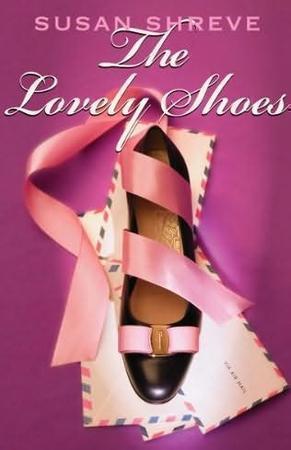 “THE LOVELY SHOES,” by Susan Shreve, Arthur A. Levine Books, June 1, 2011, $16.99 (ages 9-12)
“THE LOVELY SHOES,” by Susan Shreve, Arthur A. Levine Books, June 1, 2011, $16.99 (ages 9-12)
Every once in a while you come across a book you want to keep on a special shelf with all the others you reread time and again. “The Lovely Shoes” by Susan Shreve is one such book.
Franny Hall is different. So is her mother, but for another reason.
Franny was born with a birth defect; her right foot is small and curled making her, as the people of the time called it, crippled. Franny’s right leg is also shorter than the left, and she has to wear a lift in her shoe to make walking somewhat even. Her heavy orthopedic shoes are ugly and hardly a fashion statement.
Margaret Hall is beautiful and foreign. Her outlook on the world is distinctive and varies greatly from that of the other residents in their small Ohio town. Margaret wears pants, while most women wear dresses. She deliberately dyes a white stripe in her hair while others try to cover theirs up.
Mother and daughter both stand out and neither one likes the reasons behind the other’s recognition.
Like a mother should, Margaret loves her daughter and wants her to be seen for accomplishments rather than her physical disability. So when a school dance comes around, she devises a plan involving silver shoes and toilet paper — disaster ensues.
It’s then that Franny decides to stop playing nice, to not be agreeable all the time. Everyone notices the change. And many miss the old Franny and want her back, but Margaret lets Franny work things out on her own, with a little help on the side.
Margaret has a plan. She’s read about Salvatore Ferragamo, a famous shoe designer to the stars who lives in Italy. Surely he can craft a perfect pair of shoes for Franny. It’s an expensive proposition, traveling to Italy for a consultation. And it may not work. But what if it does?
“The Lovely Shoes” is magical. It contains no vampires or werewolves in it. Nor are there dragons or wizards or princesses. There are no gimmicks or bells and whistles. Instead, author Susan Shreve relies on her talent as a storyteller and lets her work speak for itself. The result is a classic feel reminiscent of the books that my mother recommended to me as a young woman.
Shreve’s writing has an honesty to it that rings true to the reader. And though her story is set more than 50 years ago, her voice is accessible and completely relatable to young women of our time.
